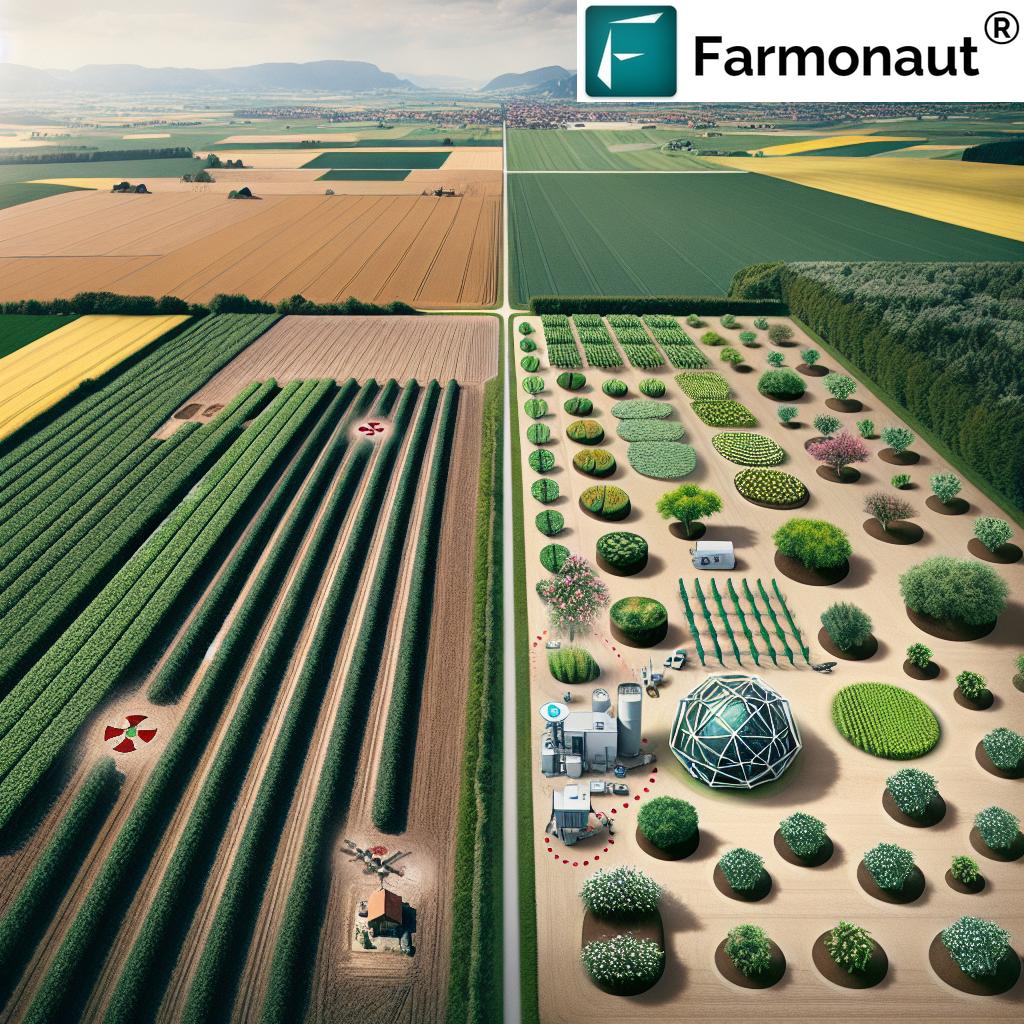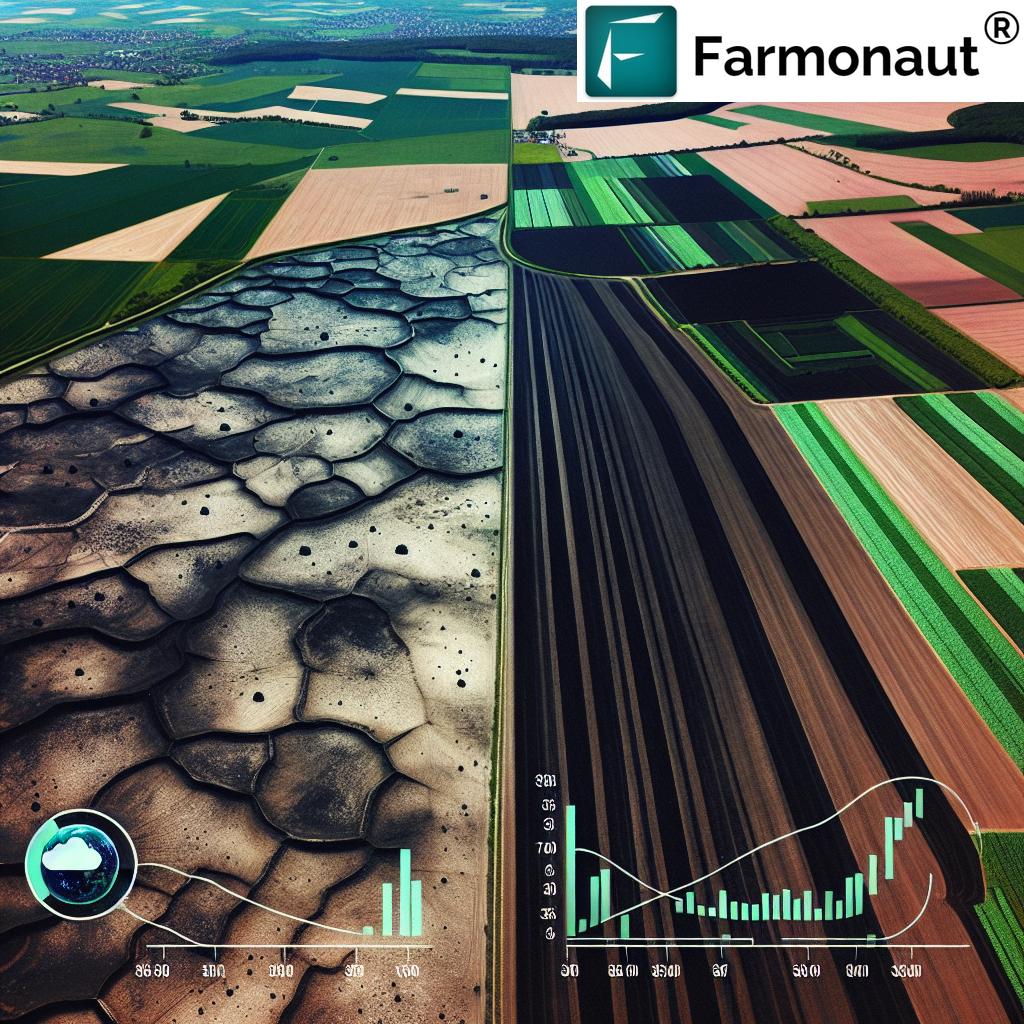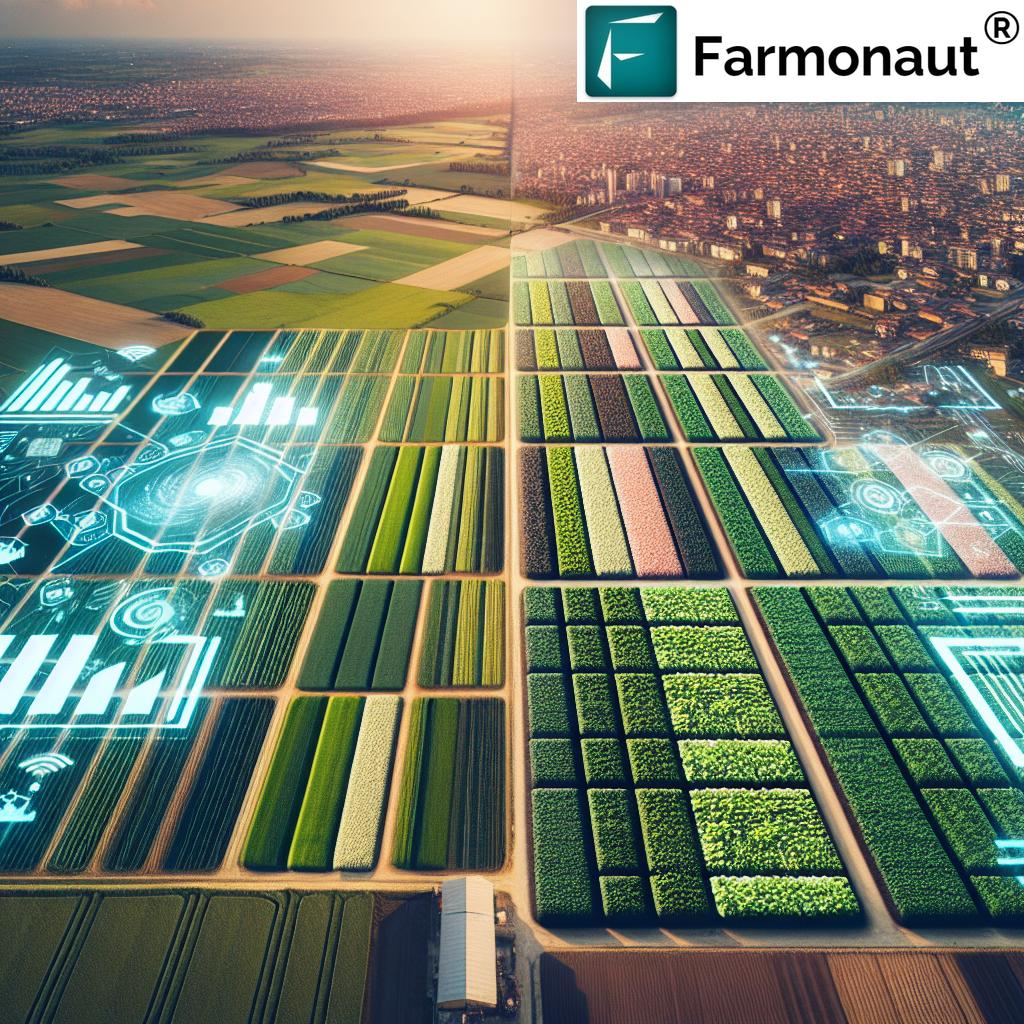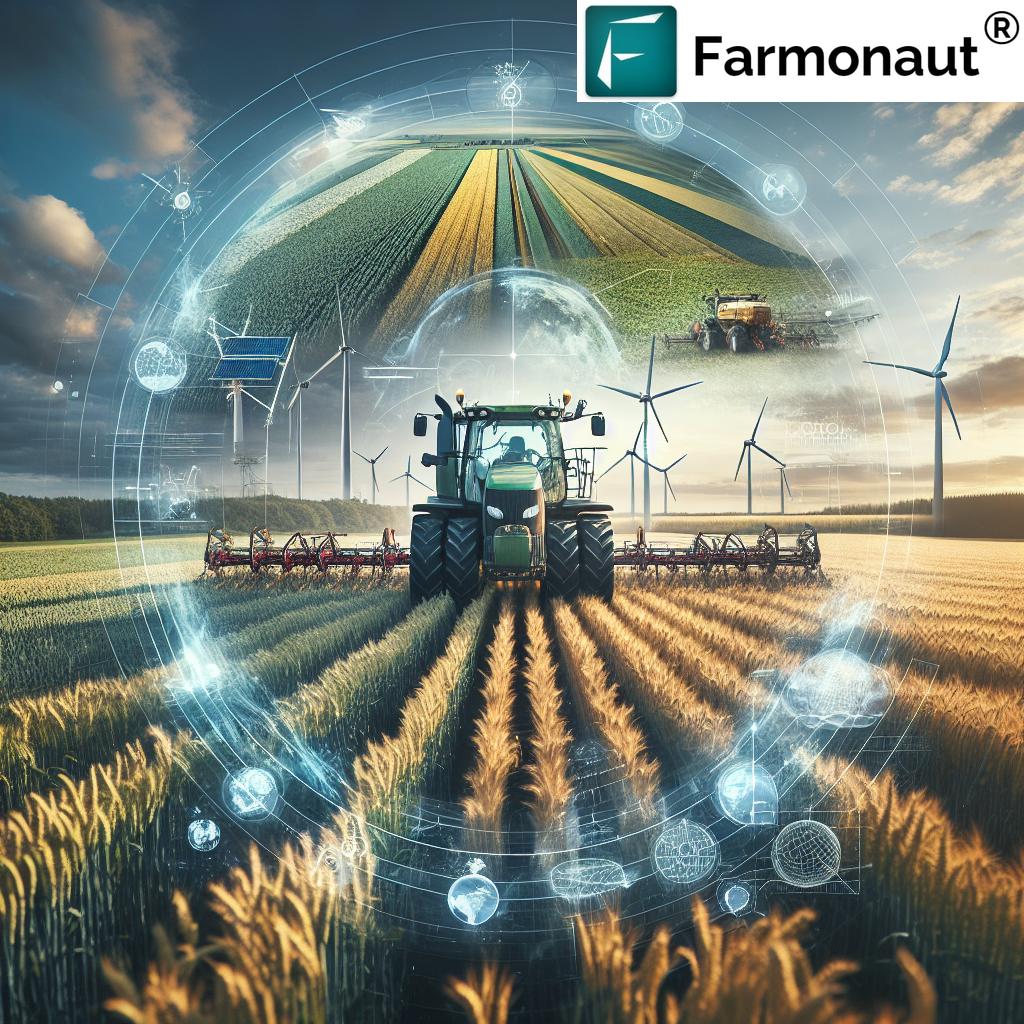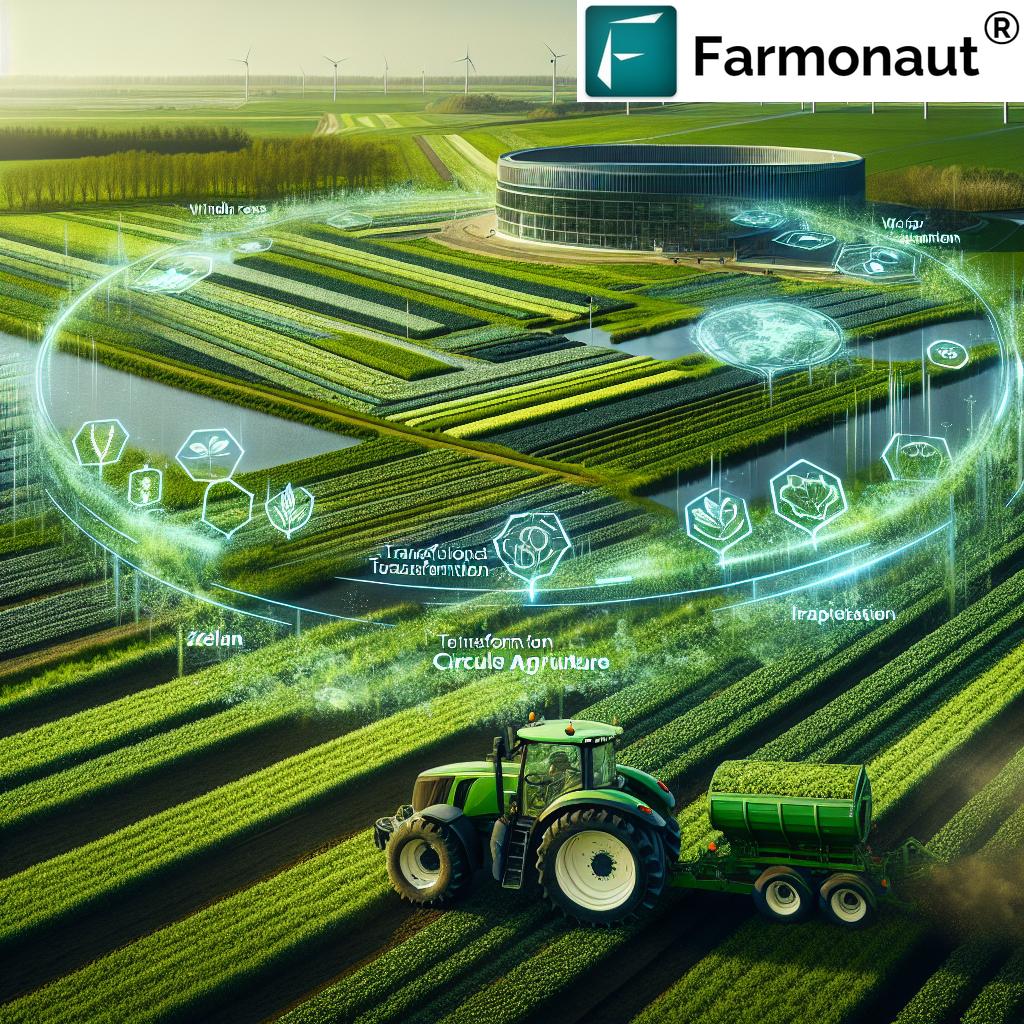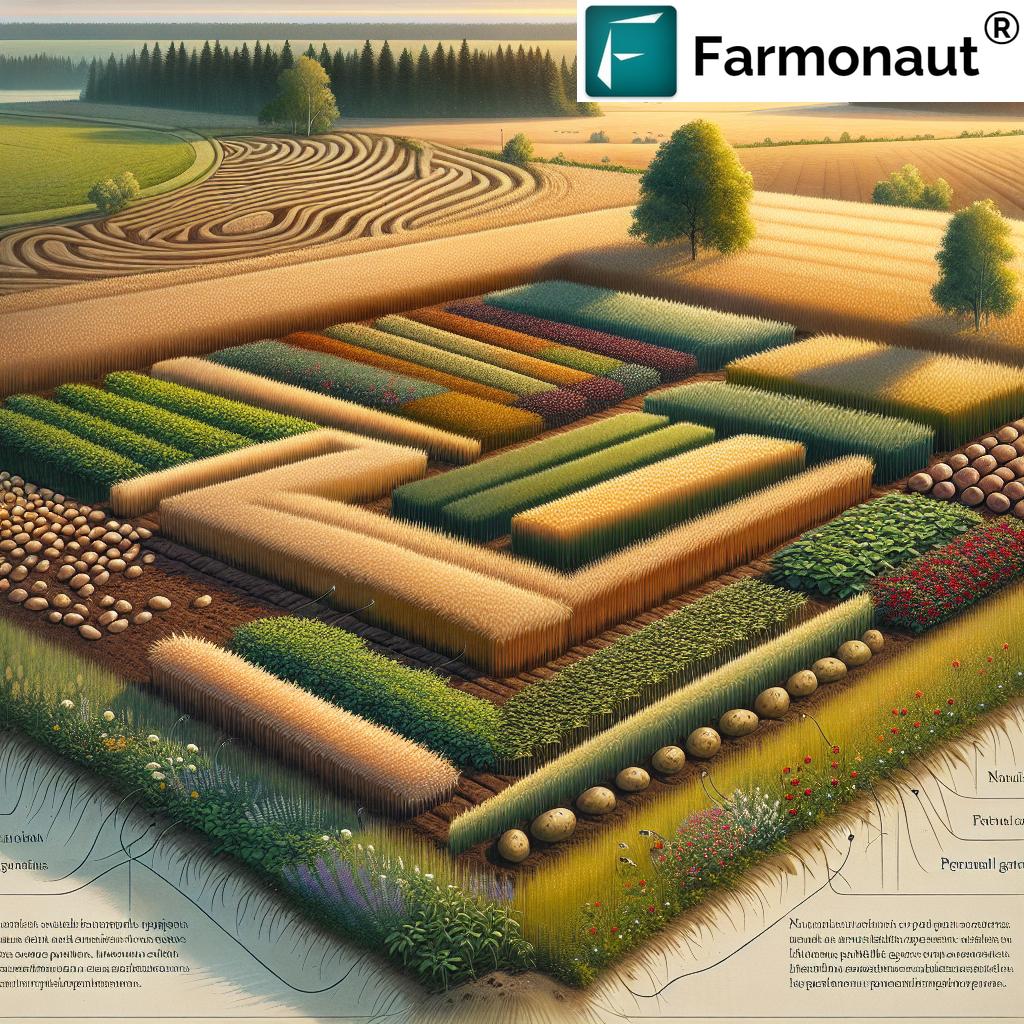EUDR Deforestation Monitoring: 7 Key Compliance Steps
“Over 90% of EU-imported soy and beef must now be traced for deforestation-free compliance under EUDR regulations.”
Table of Contents
- EUDR Deforestation Monitoring: Overview, Scope & Objectives
- Implications for Agriculture, Farming, and Forestry Sectors
- EUDR Deforestation Monitoring: 7 Key Compliance Steps
- Monitoring & Compliance Strategies: Satellite, Due Diligence, and Technology
- Challenges and Special Considerations for Stakeholders
- EUDR Compliance Steps Overview Table
- How Farmonaut Supports EUDR Compliance & Deforestation-Free Supply Chains
- Frequently Asked Questions (FAQ)
- Conclusion: Embracing EUDR for a Sustainable Future
EUDR Deforestation Monitoring: Overview, Scope & Objectives
The European Union Deforestation Regulation (EUDR) marks a pivotal move in global efforts to curb deforestation and forest degradation. Effective from December 30, 2025, this regulation requires strict compliance from all stakeholders involved in the import or export of specified commodities into or out of the EU market.
EUDR’s core objective is to ensure that key ‘forest risk commodities and products’—including palm oil, cattle, soy, coffee, cocoa, timber, and rubber, as well as derived goods such as beef, furniture, and chocolate—are not linked to deforestation or forest degradation after December 31, 2020.
- Targets: Commodities and derived products most associated with tropical and sub-tropical deforestation risks.
- Geographic Scope: Applies to all countries wishing to place relevant commodities on the EU market or export from it.
- Key Requirements:
- Operators must demonstrate that no deforestation or degradation occurred in the supply chain post-December 31, 2020.
- Provide geographic coordinates of production plots for traceability in global supply chains.
- Ensure compliance with applicable laws of the producing country, including environmental, land use, and labor laws.
- Enforcement: Non-compliance can result in fines of up to 4% of the operator’s turnover within the EU.
Why was the EUDR Introduced?
Deforestation and forest degradation are directly linked to climate change, biodiversity loss, and unsustainable land use in agriculture, farming, and forestry. The EU is a major importer of these commodities, and with the Deforestation Regulation, it places responsibility on EU supply chains and traders to verify the deforestation-free status of their imported products.
The intention is to transform deforestation-free supply chains from aspiration to standard practice, impacting commodity sourcing and production worldwide—especially in high-deforestation nations like Brazil, Vietnam, and countries across Africa and Southeast Asia.
Implications for Agriculture, Farming, and Forestry Sectors
The EUDR is a game-changer for multiple industries. Let’s break down the main implications for agriculture, farming, and forestry sectors regarding compliance, transparency, and sustainable commodity production.
1. Supply Chain Transparency & Traceability
- Businesses must trace commodities back to the plot of origin using geographic coordinates, ensuring comprehensive mapping and transparency in global supply chains.
- Document provenance for every batch of palm oil, coffee, soy, timber, rubber, cocoa, and derived products.
- Maintain detailed records for auditing by European authorities.
2. Smallholder Challenges & Inclusion
- Smallholder farmers often lack resources and technical expertise to meet complex EUDR compliance steps.
- For instance, Vietnam’s coffee sector involves 95% smallholders; global rubber production relies on 85% smallholders.
- Supporting smallholder inclusion is essential—otherwise, vulnerable groups risk exclusion from the EU market.
- Support for smallholder farmers EUDR is a priority, requiring dedicated resources and educational initiatives.
3. Technology Adoption & Innovation
- The EUDR encourages leveraging advanced technologies—including satellite monitoring, AI, and blockchain—to implement deforestation monitoring technologies and facilitate compliance procedures.
- Innovative platforms (such as TRACT and Rainforest Alliance) are already integrating AI for data collection, supply chain analysis, and deforestation risk assessment.
- Farmonaut’s blockchain-based product traceability (click here for details) empowers businesses to validate sustainable agricultural practices and boost consumer trust with transparent chain-of-custody documentation.
4. Due Diligence & Legal Compliance
- Operators must conduct and document due diligence, including risk identification, mitigation, and validation of forest-friendly sourcing for EUDR compliance.
- Comprehensive and auditable documentation is mandatory for meeting EUDR requirements for agriculture and related industries.
The result is a profound shift towards responsible sourcing and sustainable supply chains, with a significant impact on agriculture, farming, forestry, and related sectors worldwide.
How Farmonaut’s Satellite Technology is Revolutionizing Land Use in Agriculture
EUDR Deforestation Monitoring: 7 Key Compliance Steps
Complying with the EU Deforestation Regulation involves a series of logical, sequential actions. Below, we detail the 7 key compliance steps operators, traders, and all relevant actors must implement for adherence to the EUDR and fostering deforestation-free supply chains:
- Supply Chain Mapping & Identification
Identify all relevant supply chain actors, from the production plot through to the point of sale.
Purpose: Establish traceability in global supply chains and identify forest risk commodities. - Collection of Geolocation & Documentation
Collect and record the precise geographic coordinates of every production plot involved in the supply chain.
Purpose: Demonstrate and document the origin to verify compliance with EUDR’s requirements. - Assessment of Deforestation Risk
Use satellite monitoring and AI analysis to assess plots and areas for recent deforestation or forest degradation.
Purpose: Proactively identify and manage deforestation risks and enable rapid action. - Legal & Regulatory Compliance Verification
Ensure that all commodities meet not only EUDR, but also the laws of the producing country (including land tenure, labor, environmental regulations).
Purpose: Align with both EU and national legal frameworks for sustainable commodity production. - Implementation of Due Diligence Procedures
Establish robust due diligence and risk assessment processes, including regular check-ups, audits, and documentation.
Purpose: Demonstrate commitment to responsible sourcing through evidence-based procedures. - Mitigation & Remediation of Identified Risks
Where risks or non-compliance are detected, operators must implement prompt corrective measures as per EUDR standards.
Purpose: Guarantee that only deforestation-free commodities reach the EU market. - Submission of Due Diligence Statements & Ongoing Monitoring
Submit compliance statements and supporting documentation as required, and maintain ongoing satellite and data-driven monitoring of supply chains.
Purpose: Cycle of continuous improvement and transparency in global commodity supply chains.
Each step is interconnected—skipping one increases compliance risk and jeopardizes supply chain transparency.
“Satellite monitoring covers 100% of supply chain land area to ensure transparency and EUDR deforestation compliance.”
Satellite & AI Based Automated Tree Detection For Precise Counting and Location Mapping
Monitoring & Compliance Strategies: Satellite, Due Diligence, and Technology
Satellite Monitoring of Deforestation
Satellite monitoring is now a cornerstone of regulatory due diligence and proactive deforestation detection. Platforms like Global Forest Watch enable near real-time alerts on deforestation activities worldwide.
- Operators can use satellite data to monitor production plots for illegal land clearing or risks, strengthening EUDR Deforestation Regulation compliance.
- Early detection allows for prompt corrective action, including suspending procurement, initiating remedial measures, and improving overall farm management.
- Solutions like Farmonaut’s satellite-based crop health and forest monitoring (learn more) help businesses assess resource health, optimize yields, and confirm deforestation-free status—with all actionable data available on mobile or desktop.
Supply Chain Mapping and Traceability in Global Supply Chains
Accurate supply chain mapping ensures commodities are sourced responsibly and not linked to illegal land use or forest degradation. Integrating satellite data with blockchain traceability further strengthens supply chain transparency, making it harder to falsify records or obscure environmental impacts.
- Farmonaut’s traceability platform (see how it works) adds an immutable, auditable layer to commodity records—essential for companies placing or exporting products like palm oil, coffee, beef, or cocoa into the European Union.
- Traceability solutions not only facilitate EUDR compliance but enhance consumer confidence in ‘deforestation-free’ claims.
Due Diligence Procedures & Risk Assessments
The EUDR defines rigorous due diligence procedures for all operators and traders. This involves:
- Conducting risk assessments based on country benchmarks (high, standard, low deforestation risk).
- Collecting and verifying documentation for the entire supply chain.
- Implementing mitigation measures wherever risk or evidence of non-compliance exists.
- Retaining all records and updating procedures as new risk factors or guidance emerges.
These procedures should be ongoing and adaptive, supported by the latest monitoring and data technologies—such as AI-driven analysis and API-based tools like the Farmonaut API or API Developer Docs—for agricultural stakeholders, researchers, and businesses.
Farmonaut Web app | Satellite Based Crop monitoring
Challenges and Special Considerations for Stakeholders
1. Smallholder Inclusion and Support Initiatives
- Smallholder access and technical support: Small producers in countries like Vietnam, Indonesia, and across Africa require assistance to meet EUDR’s technological and data requirements.
- Support for smallholder farmers EUDR is not just ethical but necessary for food security, rural development, and sustaining global commodity flows.
- NGOs, governments, and service providers like Farmonaut are pivotal in delivering educational resources and affordable precision agriculture solutions (explore large scale management tools).
2. Regulatory Alignment Across Countries
- Aligning EUDR compliance steps with existing national policies in producing countries is essential for seamless implementation.
- Operators must monitor evolving policy updates and ensure comprehensive due diligence to satisfy both EU and country-of-origin requirements.
- The Team Europe Initiative on Deforestation-free Value Chains and similar efforts aim to bridge regulatory gaps and support sustainable transitions globally.
3. Ensuring Technological Accessibility
- Advanced deforestation monitoring technologies and data collection systems, while powerful, must be accessible and affordable for all supply chain actors.
- Mobile-compatible platforms, satellite/IoT integration, and user-friendly dashboards are critical—this is where Farmonaut’s platform delivers immense value for users at every scale.
- Investment in rural internet infrastructure, digital training, and open-data initiatives further lowers compliance barriers for marginalized producers.
Farmonaut Introduction – Large Scale Usage For Businesses and Governments
For businesses seeking to monitor and minimize their carbon footprint for compliance and sustainability goals, Farmonaut’s Carbon Footprinting tool tracks real-time emissions linked to agricultural activities.
EUDR Compliance Steps Overview Table
| Compliance Step | Purpose / Objective | Estimated Timeframe (Months) | Role of Satellite Monitoring |
|---|---|---|---|
| 1. Supply Chain Mapping & Identification | Establish traceability, identify every actor, and clarify origins | 1 – 3 months | Maps land use change and verifies parcel boundaries |
| 2. Geolocation & Documentation Collection | Assign precise geographic coordinates to each production plot | 2 – 4 months | Supports geotagging and plot verification with imagery |
| 3. Deforestation Risk Assessment | Analyze production areas for deforestation/history since 2020 | 1 – 2 months | Delivers real-time alerts and vegetation loss detection |
| 4. Legal & Regulatory Verification | Check for compliance with EU and producing country’s laws | 2 – 4 months | Provides evidence of legal land status and changes |
| 5. Due Diligence Implementation | Risk analysis, documentation, and regular auditing | Ongoing (Initial setup: 3 months) | Automates monitoring and enhances audit efficiency |
| 6. Mitigation & Remediation | Act on non-compliance; restore and adapt procedures | As needed (1-2 months/case) | Detects issues requiring corrective action |
| 7. Submission & Ongoing Monitoring | File due diligence statements and sustain real-time oversight | Continuous / annual review | Provides continuous data flow for reporting and compliance |
How Farmonaut Supports EUDR Compliance & Deforestation-Free Supply Chains
As a pioneering agricultural technology company, we at Farmonaut are committed to empowering stakeholders across the globe to meet EUDR requirements for agriculture and related sectors. Our platform leverages a blend of satellite, AI, and blockchain technologies to streamline regulatory compliance, enhance transparency, and underpin sustainable supply chains.
Our Technological Edge for Deforestation Monitoring and Compliance
-
Satellite-Based Crop & Forest Monitoring:
We provide real-time, multispectral satellite imagery to track crop health, assess land cover change, measure soil moisture, and identify signs of deforestation or degradation, all accessible via mobile, web, or API.
-
Jeevn AI Advisory System:
Our AI-driven system processes satellite data to issue timely recommendations, support compliance risk detection, and offer personalized advisory for climate-adapted, sustainable farming.
-
Blockchain-Backed Traceability:
Our blockchain solution guarantees traceability, authenticity, and security at every supply chain stage, meeting the EUDR’s transparency and validation needs.
-
Fleet & Resource Management Tools:
We help agribusinesses lower operational costs while ensuring that logistics and machinery use are monitored and sustainable throughout the crop lifecycle. Learn more about fleet management for agro-logistics here.
-
Carbon Footprinting:
Our solution facilitates carbon footprint tracking (see details) for sustainable reporting and compliance with environmental regulations.
-
Comprehensive API Access:
Developers and organizations can integrate Farmonaut’s data via our API (Farmonaut API; API Docs) for seamless, scalable compliance automation.
-
Accessible, Affordable Precision Tools:
Our subscription model democratizes advanced monitoring and advisory services, giving smallholders, cooperatives, large agribusinesses, and government agencies customizable access to cutting-edge compliance tools.
To better serve our users, our apps are available for Android, iOS, and web.



We are proud to support transparent, sustainable, and deforestation-free supply chains worldwide.
Farmonaut Subscription Plans
Frequently Asked Questions (FAQ)
What is the main goal of the EUDR?
The main goal of the EU Deforestation Regulation (EUDR) is to prevent deforestation and forest degradation linked to certain commodities (e.g., coffee, soy, palm oil, rubber, timber, cattle, cocoa) imported to or exported from the EU. It ensures that supply chains for these products are transparent and deforestation-free post-December 31, 2020.
Which sectors are most affected by EUDR?
The agriculture, farming, and forestry sectors are most affected—especially businesses involved in the production, processing, import or export of forest risk commodities or their derived products.
How does satellite monitoring help with EUDR compliance?
Satellite monitoring provides real-time land use data, detection of deforestation activities, and continuous verification of supply chain origins. This technology underpins accurate supply chain mapping and transparency, enabling rapid compliance and risk remediation.
What are the main challenges for smallholder farmers?
Smallholders often face limited resources, lack of technical expertise, and insufficient access to compliance technologies—making it difficult to trace, geotag, and verify their production. Targeted support and inclusive, affordable tech platforms are essential to help smallholders maintain access to the EU market.
What documentation is required for EUDR compliance?
You must provide: geographic coordinates of all production plots, evidence of compliance with both EU and producing country laws, risk assessments, mitigation plans, and ongoing monitoring records. Blockchain-based solutions and robust agricultural supply chain transparency mechanisms simplify this documentation.
What are the consequences of non-compliance?
Non-compliance can result in fines up to 4% of the company’s EU turnover, removal of products from the market, and reputational damage.
How can technology providers like Farmonaut assist with EUDR compliance?
Technology providers like Farmonaut offer satellite-based monitoring, AI advisory, blockchain traceability, and supply chain management solutions that enable affordable, scalable, and real-time compliance with the EUDR across all stakeholder levels.
Conclusion: Embracing EUDR for a Sustainable Future
The EU Deforestation Regulation not only compels businesses to demonstrate deforestation-free supply chains but also prompts a global shift in the way we approach sustainability, agricultural production, and resource stewardship. Operators, traders, and agricultural sectors must commit to rigorous compliance, leveraging deforestation monitoring technologies, satellite observation, traceability tools, and due diligence frameworks.
We at Farmonaut remain dedicated to providing the world’s farmers, agribusinesses, governments, and NGOs with affordable, accessible, and innovative compliance solutions. Our tools empower users to demonstrate responsible sourcing, optimize land management, and contribute to a deforestation-free future for all.
- Embrace supply chain transparency and sustainable land use practices
- Utilize satellite and AI technologies for real-time, proactive compliance
- Support inclusivity and smallholder access for global impact
- Connect with Farmonaut’s web, mobile, or API platform to get started
Together, we can ensure the future of food, climate, and biodiversity through smart, data-driven compliance with the EUDR and similar global regulations.





